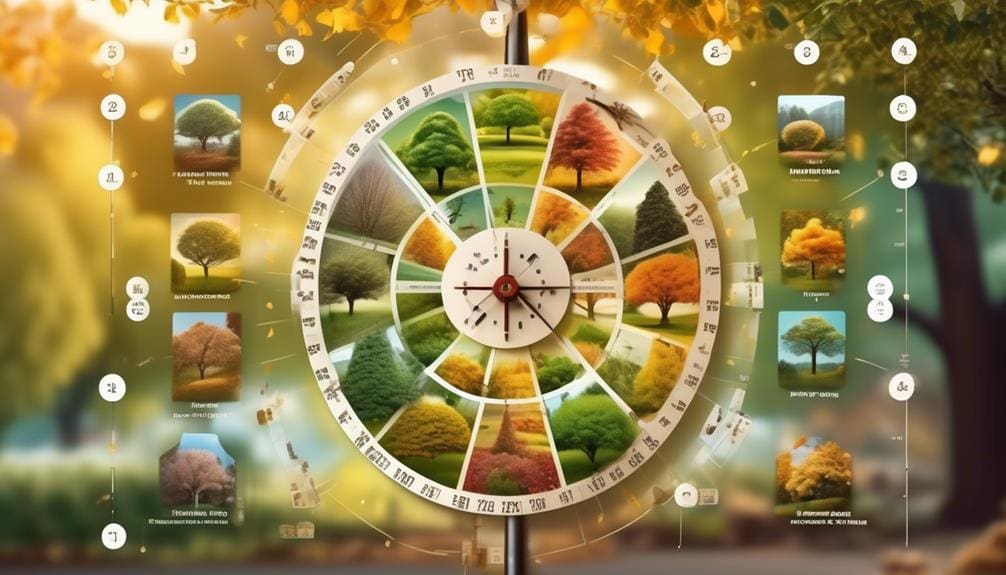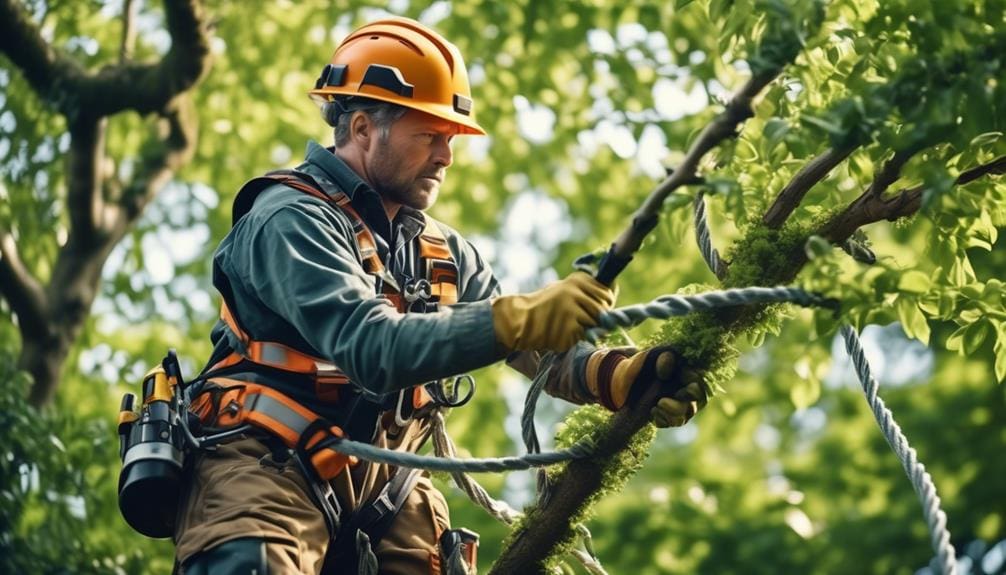Tree Trimming
Trim Smart: Grow Thriving Trees
Just like a sculptor carefully chisels away at marble to uncover the masterpiece within, we must approach the pruning of our trees with a combination of artistry and precision. We have witnessed repeatedly how strategic cuts can revitalize a tree, promoting fruitfulness and growth, while careless trimming can cause a tree to deteriorate.
Understanding the delicate balance between excessive and insufficient pruning is crucial; this skill only comes with knowledge and experience. As we delve into the intricacies of tree biology and the use of specialized tools that facilitate the task, we will reveal the secrets to ensuring our trees survive and thrive.
However, one question persists: how can we differentiate between pruning that benefits and pruning that harms? Join us as we unveil the essential techniques that can make a significant difference in the lifespan of your trees.
TL;DR
To promote the healthy growth and vitality of trees, it is crucial to have a good understanding of their biology, use the appropriate pruning tools, time the pruning seasons correctly, and take necessary safety precautions.
Key Takeaways
- Proper pruning promotes healthy new growth and ensures nutrients reach the main stem and branches correctly.
- Using the right pruning tools ensures clean and precise cuts that promote healthy growth.
- Timing pruning seasons influence the health and growth patterns of trees.
- Regularly removing tree suckers promotes tree vitality and overall growth and health.
- Awareness of surroundings, disease and pest inspection, and stable support systems ensure safety while pruning.
Understanding Tree Biology
To understand how trees thrive, it’s important to grasp their intricate vascular system, which efficiently transports water and nutrients throughout their structure. This understanding forms the foundation for effective tree care, guiding our decisions on pruning to encourage healthy new growth.
For example, a flowering tree showcases its vibrant beauty when the main stem and branches receive the right nutrients.
While tending to trees and shrubs, we remain attentive during spring growth, looking out for water sprouts that might drain energy from the tree.
By recognizing the biological processes that govern their resilience, we equip ourselves with the knowledge to promote strong health in our green companions.
By doing so, we secure our ability to enjoy their shade, beauty, and benefits for years to come.
Selecting Pruning Tools
Equipping ourselves with the correct pruning tools is essential for making precise cuts that promote the healthy growth of trees. When we use simple pruning techniques, we prefer to use sharp pruners for cutting back unwanted shoots known as suckers. These suckers drain resources from the main tree, so it is best to address them while they are young, before they develop tough bark.
For areas that are difficult to reach, our preferred tools are loppers or pole pruners, which allow us to trim without straining. In some cases, it is advisable to seek professional expertise when dealing with high tree suckers. This type of pruning ensures that our trees remain strong and healthy, minimizing the stress that often results in suckering and the growth of water sprouts.
Timing Pruning Seasons


Understanding the best time to prune is crucial because it greatly affects the health and growth of our trees. To create the most favorable environment for growth and vitality, let’s explore the details.
- Late Spring/Early Summer: Prune flowering shrubs after blooms have faded, to avoid cutting off buds for next year. This is also an ideal period for Small Trees to recover before the harsher seasons.
- Keep in Mind: Assess the growth and health from previous years. Pruning during dormancy can invigorate trees for a robust new season, while over-pruning can lead to stress and vulnerability.
- Several Years Outlook: Timing pruning seasons isn’t just about immediate results. Plan with a multi-year perspective to shape trees gradually and avoid drastic interventions that could hinder long-term development.
Mastering Pruning Techniques
To maintain the optimum health of trees, it’s important to prune them at the right times. Now, let’s focus on the actual techniques for mastering this task. One effective technique involves regularly removing suckers that appear on the tree.
These suckers can be found at the base of the trunk or in the middle of the plant. To accomplish this, we recommend using sharp pruners to make clean cuts. If the suckers are out of reach, loppers or pole pruners are handy tools to have.
These unwanted shoots often indicate stress, disease, or graft failure in trees, flowering shrubs, and ornamental trees. By promptly addressing suckers, we ensure that the tree’s resources are directed toward its overall growth and health.
To prevent the growth of suckers, it is wise to take vigilant care of trees, consistently maintain them, and choose tree species that are less prone to this issue.
Ensuring Safety Measures


Let’s start by prioritizing safety before diving into proper pruning details. We must wear protective gear like gloves and goggles to prevent injuries. Remember, taking safety precautions is not just a suggestion; it’s a basic requirement for responsible and secure pruning.
Here’s how we can maintain our rights reserved to safety:
- Awareness of Surroundings: Always check for electrical wires and structures when pruning taller shrubs or trees to avoid accidents.
- Disease and Pest Inspection: Before trimming, inspect the tree, especially the lower branches, for signs of disease or pests to prevent spreading.
- Stable Support Systems: Ensure the ladder’s stability and correct positioning every time, particularly when tackling large projects like a mature hydrangea growing for over three years.
Conclusion
We have learned the important aspects of tree care and equipped ourselves with the necessary knowledge and tools to prune effectively.
By timing our pruning according to the seasons, we ensure our trees’ ongoing health and vigor.
It is crucial to master techniques such as selective trimming and to avoid harmful practices like topping, as these promote healthy growth.
Together, we can create thriving environments that future generations will enjoy.
Remember, proper pruning leads to the flourishing of trees.


Hello there! I’m Logan Foster, the green-thumbed social media marketer behind the vibrant world of 1800TreeGuy.com. With roots firmly planted in arboriculture, I’ve branched out to help clients cultivate their dream outdoor spaces, one leafy canopy at a time. My knack for nurturing nature is more than a profession—it’s a way of life.
When I’m not talking trees and teaching the art of arboreal care, you can find me cheering on the Bulldogs—my alma mater’s pride and my forever team. My environmental studies there didn’t just teach me about ecosystems; they instilled a lifelong passion for protecting our planet.
Off the clock, I’m an adventurer at heart. Whether it’s trekking the Appalachian trails, pedaling down a mountain path, or crafting guides to share the wonders of the wild, I’m happiest with soil under my nails and the sun on my face. And let’s not forget Yoda, my pug sidekick. He may not have mastered the art of stillness, but his joyful grins are my daily dose of happiness.
I’m all about making connections—between people and the great outdoors and between my clients and their ideal landscape visions. My approach is personal; every tree has a story, and every garden reflects its caretaker.
If you want to green your scene or share in my outdoor escapades, give me a shout on Instagram or Facebook. Let’s cultivate a conversation and grow a community rooted in a love for the lush life.







